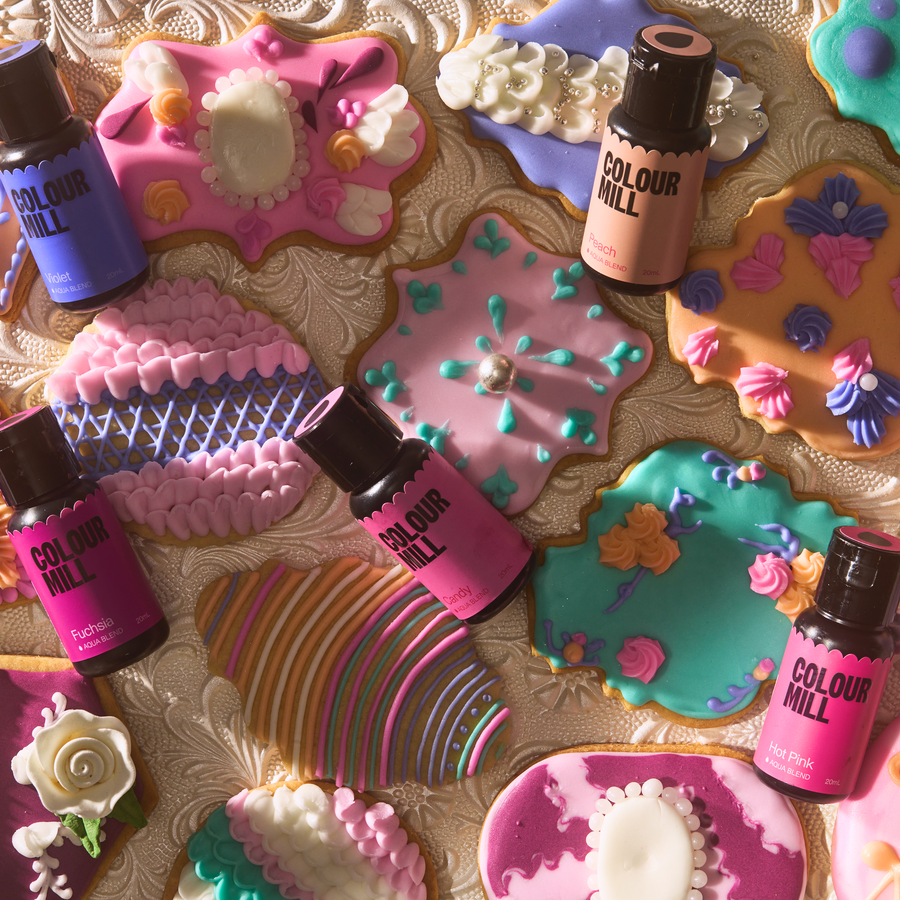2. Add Colour Slowly
Avoid adding too much colour at once when colouring royal icing. Start with a drop or two at a time, mix and then add more until you've reached your desired shade.
Adding too much liquid colouring at once can result in thinning out and making your royal icing too runny to work with (so much so it may not even dry down properly).
3. Let Darker Colours Develop
If you are trying to achieve dark colours like black, red or navy, always allow enough time for the colours to develop before decorating.
For black, colour up to a dark grey, for red, colour up to a deep pink and then let your icing sit to develop for a few hours.
If you try to achieve dark colours immediately you will be adding too much colouring and your icing won’t dry down.
4. Pigments Forever Dyes Never
While we're on the topic of the many different types of food colouring out there, it's important to make the distinction between dyes and pigments.
Dyes make up 99% of food colouring you see on the shelves. They are a versatile, highly concentrated and cost-effective option.
Pigments are what we make our food colouring with here at Colour Mill. Compared to dye particles pigment particles are much larger and stick to your icing instead of soaking into it.
This means our colours are fade-resistant, streak-free and can be layered without blending or bleeding into each other. Pigment colours can also be made in a wider variety of shades than dyes, unlocking a whole new world of colour!
Explore our range of Aqua Blend colours for royal icing, macarons, meringue, jellies, drinks and more here!








